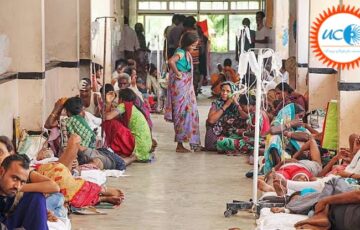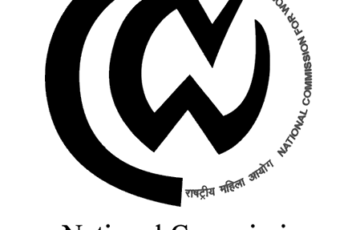Q. While India has shown improvement in a number of socio-economic indicators over the years, considerable work still needs to be done to improve India’s performance in the Global Hunger Index. Discuss.
Approach:
- Give a brief introduction about India’s improvements in various socio-economic indicators.
- Discuss briefly the Global Hunger Index (GHI) report, 2019 with regard to India.
- Highlight the additional efforts that need to be taken to improve India’s ranking.
- Conclude on the basis of the above points.
Answer:
NITI Aayog’s index on sustainable development goals (SDGs) shows that India has seen a significant improvement in several socio-economic indicators. As per the Multidimensional Poverty Index 2019, incidence of multidimensional poverty in India has almost halved between 2005-06 and 2015-16 to 27.5%. Census-2011 shows that the literacy level has increased from around 65% in 2001 to 74 % in 2011. National Family Health Survey 4 highlights improvement in health indicators like Infant Mortality Rate has declined from 57 in 2005-06 to 41 in 2015-16, Total fertility rate has declined from 2.7 in 2005-06 to 2.2 in 2015-16 etc.
Though India has subsequently moved towards the targets set by SDGs, the Global Hunger Index (GHI) report, 2019 has put India at 102 out of 117 countries putting it in the ‘serious hunger’ category.
GHI ranks countries based on four indicators:
- Undernourishment: share of population, whose caloric intake is insufficient
- Child Wasting: share of children under the age of five who have low weight for their height
- Child Stunting: share of children who have low height for their age
- Child Mortality: mortality rate of children under the age of five
Although, in 2019 GHI, India has shown improvement in indicators like stunting, under-five child mortality in India and undernourishment, in child wasting it has worsened. There remains a lot of scope to improve India’s performance in the Global Hunger Index on all indicators. This can be understood from the following:
- Health infrastructure: Public health spending needs to be increased from the current value of less than 1.5 % of GDP. Also regional disparities with regard to health infrastructure should be reduced.
- Condition of women: Optimum efforts should be taken to improve the condition of women in society by increasing female literacy; awareness about maternal and child health through schemes like Pradhan Mantri Matru Vandana Yojana, Janani Shishu Suraksha Karyakram etc.
- Child health: It includes efforts like bringing full immunization coverage, effective implementation of schemes like Integrated Child Development Scheme, Mid-Day Meal program, initiatives aimed at food fortification, reducing hidden hunger, improving antenatal and neonatal care etc.
- Sanitation: Efforts like Swachh Bharat Abhiyaan, banning open defecation etc. can improve sanitation and hygiene that has a direct correlation to stunting and wasting.
- Food availability: Improving the effectiveness of Public distribution systems through digitization, schemes like “One country, one ration card” etc. can be crucial in improving nutrition levels.
Furthermore, the role of active citizens is very crucial for further improving the socio- economic indicators in India and consequently, India’s ranking in the GHI.







